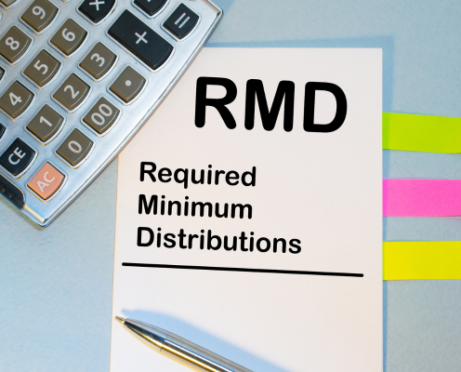
When I learned on Facebook that my retired college advisor, English professor, and friend John Peavoy, Ph.D., was undergoing radiation treatment for a “scabby thing on his head,” I expressed encouragement with heart emojis or a thumbs-up each day as he posted about his diagnosis, health insurance, treatment, and anecdotes related to his observation of — or interactions with — other patients in the same boat.
Professor Peavoy’s openness about his illness reminded me of when he taught at Scripps College, a private liberal arts school in Claremont, California, where I somewhat regrettably chose the impractical major of French literature.
The number of former students who remain connected to the professor via Facebook, show a man adored for his empathy, zany sense of humor, and passion for literature, film, and writing.
“Would he mind writing about his experience?” I wondered, as I opened Facebook’s Messenger app on my phone. “Would he be weirded out by a 50-year-old former student asking him to share at a vulnerable time about the financial aspects of his illness? I concluded if anyone would understand — it would be him, or he would find a nice way to tell me to bugger off.
I explained why I hoped he would consider: to touch others facing a similar life event, to demystify and destigmatize illness, and to help open a dialogue about the healthcare options available to Americans as they near retirement.
As a passionate advocate for financial literacy, I believe anyone, whether starting their career or nearing the twilight of their profession, should have a plan for both expected and unforeseen medical expenses. Much is written for the employed, but what about people a few years away from retirement or those already there, as Professor Peavoy?
I hope his story paired with practical information about retirement healthcare options can answer some of the most common questions.
How Big of a Retirement Expense is Healthcare Insurance?
As with everything, it depends. What is crystal clear: U.S. healthcare costs are a contentious issue among politicians, policymakers, and the general public, as prices continue to rise, up 4.6 percent to about $11,500 per person a year, or a total of $3.8 trillion, which accounts for nearly 18 percent of the U.S. gross domestic product, according to the Centers for Medicare and Medicaid Services (CMS). Picture a pie cut into five pieces: Nearly one piece or one-fifth of the pie is related to healthcare spending.
What’s more: A recent study in the Journal of the American Medical Association found that of 1,028 adults age 50 to 64 surveyed, 45 percent had low confidence in their ability to afford healthcare in retirement. In 2021, a couple (each age 65) need to have $300,000 (after tax) saved to pay their medical expenses in retirement, according to research by Fidelity.
Twenty-eight percent of large private-sector companies (from 200 to 5,000-plus employees) that offer health insurance also offer some sort of retiree health benefits, according to the Kaiser Family Foundation. The larger the company, the more likely the retiree health benefits. Typically, colleges, universities, and public sector employees may enjoy some form of retirement health benefits as well.
But for the rest of us: Small business owners and employees, gig workers, or solopreneurs, the price of healthcare and unexpected illness in retirement requires understanding and navigating your options.
If you think your healthcare will magically be covered in your old age, think about this sobering stat: National health spending is projected to reach $6.2 trillion by 2028, according to the CMS.
If you are lucky enough to have some form of retiree employer-sponsored coverage, your employer is required to provide you with a Summary Plan Description (SPD) within 90 days of your last official workday, according to the Department of Health and Human Services.
All retirees (or soon-to-be retirees) should ensure they understand what their plan does and does not cover, any coinsurance or copays, and duration of coverage.
Private sector employers can terminate health coverage for retiree beneficiaries at any time, unless clearly stated otherwise in the insurance company’s SPD. It’s a good idea to have a second or third pair of eyes to understand your benefits.
Early or Pre-Retirees — What Healthcare Insurance Options Do I Have?
In the event of early retirement, job loss, marriage, separation, divorce, moving, or the death of your insurance-carrying spouse, you can enroll in a marketplace health insurance plan under a special enrollment period that lasts 60 days from the date of the event. Otherwise, people wait for open enrollment, which is from November 1 to December 15 (except in 2021, where people have more time due to the COVID pandemic).
If one of these life events applies to you, consider the Health Insurance Marketplace, to find a plan for yourself or your family.
You may also choose to roll the dice and pay for all health expenses as they arise.
“It is important to at least carry catastrophic coverage,” says Peter Neeves, Ph.D., CentSai’s director of financial literacy. “Big deductibles aren’t what will destroy a solid financial situation in a year or two, but uninsured significant medical events can destroy years of planning and hard work.”
“It is not worth the risk of going uninsured; you never know what will happen medically at any time,” Neeves adds.
If you lose your health insurance due to unemployment, you may be eligible to continue on your employer-sponsored plan through COBRA, typically for up to 18 months.
Remember: You will be financially responsible for the entire cost of your monthly health insurance premium under COBRA. Some people have sticker shock when they see the actual monthly price of COBRA without their employer’s contribution. Others may decide paying the premium is worthwhile.
You can opt to use a private health insurance agent or broker. Typically, agents represent one or a few healthcare companies, while a broker can represent an array of providers. You can find listings for individual and small business agents and brokers here.
There are several tax-advantaged health savings plans you may contribute to leading up to retirement such as a health savings account (HSA), a health flexible spending arrangement account (FSA), or health reimbursement arrangements (HRA). To understand each of these acronyms, the Internal Revenue Service has this primer. Note, once you enroll in Medicare you can’t continue to make contributions to these accounts.
What Are My Healthcare Options Once I’m 65?
Medicare is federally mandated health insurance coverage — paid by taxpayer money — and administered by the government for those 65 and older.
Though it helps offset costs — it does not cover all medical expenses or most long-term care, according to the U.S. Centers for Medicare and Medicaid Services. It’s essential to understand your choices.
To find out if and when you are eligible for Medicare, you can use this calculator, which will ask your date of birth, whether you have worked 40 quarters (or 10 years) over your lifetime, and paid taxes on your earned income.
Some people younger than 65 with disabilities, conditions (like permanent kidney failure), or illnesses (like Lou Gehrig’s disease) are also eligible for Medicare. You need to be a U.S. citizen or a lawfully admitted non-citizen who has lived in the United States for at least five years.
If you are already receiving Social Security benefits, you will be enrolled automatically in what is called “original Medicare” parts A and B (more on that below).
You should receive your Medicare card in the mail three months before your coverage begins.
If you need to apply for Medicare, you should do so three months prior to the month you turn 65. There are several decisions you need to make, the biggest is whether to opt for traditional Medicare or Medicare Advantage. You must choose one or the other, and each comes with its pros and cons. Keep in mind, if you choose one and realize it is not the right fit, you can change your Medicare plan again during Medicare’s open enrollment period, described below.
Traditional Medicare comes with parts A (hospital), B (medical), and D (prescription drugs) provided separately. With this coverage, you can also opt for a Medicare Supplement policy, also known as Medigap to help pay for some additional out-of-pocket medical expenses.
The second option is to enroll in Medicare Advantage — sometimes called Part C — an all-in-one option which bundles together parts A, B, and, if you choose, Part D. You also may receive additional benefits such as vision and dental with Part C. With Medicare Advantage, you can’t purchase a Medicare Supplement policy.
You might be wondering how to make sense of this alphabet soup. It boils down to this: Does a plan with parts A and B plus optional part D make sense for you or would you prefer Medicare Advantage (Part C) with Part D?
“Trying to make sense of all the options and determine which will work best can be overwhelming,” says Neeves. Neeves suggests these two tips:
- Since you don’t know what your health needs will be in the future, make a decision based on your health now or what you expect for the near future. You don’t have to consider every possibility, and you can change your plan later if needed.
- This is a good time to start involving someone else in your healthcare, perhaps one of your children: someone you trust who knows you and can look over what you are doing. Getting them involved now will make it easier when you need their help 10 or 20 years from now.
Option #1 — Traditional Medicare
Part A pays for hospitalization, limited time in a skilled nursing facility after a hospital stay, and some home health or hospice services. Most Medicare recipients are eligible for Part A.
It’s not accurate to say Part A is free; rather, you and/or your spouse already put money toward Part A when you were taxed on your income while working for 10 years or 40 quarters. Nearly everyone is eligible for Part A, but if you don’t qualify for premium-free Part A, you can pay a premium of either $259 or $471 a month in 2021 — depending on how much you and your spouse have worked.
If you’re not eligible to receive premium-free Part A and want to purchase it, you need to pay for Part B as well, according to the CMS.
Part B is medical insurance. This covers doctors, other healthcare providers, outpatient care, home health providers, and other medical services. There is a monthly premium for Part B that depends on your income — it ranges from $148.50 to $504.90 for 2021.
If you are collecting Social Security, the Part B premium will be deducted from your monthly benefit; if not, you will be billed for it. You also pay an annual deductible ($203 in 2021), and typically 20 percent of any medical bill in this category, called coinsurance.
To help offset these costs, people can opt for a health insurance policy called Medicare Supplement insurance (Medigap), or, you can use coverage from a former employer or union, or Medicaid, if applicable. Though Traditional Medicare helps pay for much but not all of hospital or doctor visits,
Medicare Supplement insurance fills in the payment “gaps.” Medigap can help pay for coinsurance, deductibles, and copayments.
Important note: Medigap — or supplemental policies can be used only with Traditional Medicare (Parts A and B).
People who choose Part C or Medicare Advantage are not eligible for Medicare Supplemental insurance, or Medigap. Also, Medigap is sold by private companies per person. If you and your spouse both want Medigap policies, you will pay two monthly premiums. Medigap policies are guaranteed to be renewable.
Part D helps cover prescription drug costs, and you should consider coverage even if you or your spouse don’t currently take medication. Part D has a yearly deductible, coinsurance, and co-payments. A big shift occurred in 2020, which lowered costs for consumers.
Here is how costs stack up for a standard Part D in 2021, according to the National Council on Aging: The deductible can be up to $445.
For the first $4,130 in prescription drug costs (which may not apply to everyone), the beneficiary typically pays 25 percent and the plan pays 75 percent. If a beneficiary’s out-of-pocket cost reaches $6,550 in a given year, “catastrophic coverage” kicks in and the beneficiary pays either a 5 percent coinsurance, or a nominal co-payment.
Be sure to look at a drug insurance’s formulary — a list of drugs the policy covers in brand name and/or generic form. Formularies can differ from insurance to insurance. Also find out if your plan has tiers: Typically prescription drugs in the lower tiers cost less, and as the tiers rise, so do the prices.
Note that if you don’t sign up for parts B or D when you’re first eligible, you could be subject to a penalty. Also, if you are a U.S. veteran, you should investigate what other coverage options might be available to you.
Option #2 — Medicare Advantage or Part C
Medicare Advantage is an “all in one” alternative to traditional Medicare. These “bundled” plans include Part A, Part B, and typically Part D.
These plans may have lower out-of-pocket costs than traditional Medicare, but you also need to be willing to use doctors who are in the plan’s network, and you may need referrals to see specialists. Medicare Advantage plans are popular because many offer additional benefits that traditional Medicare doesn’t cover, such as vision, hearing, and dental.
Start With a Free Consultation
If you want to continue on your (or your spouse’s) employer-sponsored plan, find out whether you also need to enroll in Medicare Parts A and B. To learn more about how Medicare works with other insurance, click here.
If you need to speak with someone at the Medicare office to understand which option makes the most financial sense for you and your family, click here.
The Bottom Line of Health Insurance
Poor health can happen to anyone and at any time, and when it does, if you don’t know what type of coverage options you have, you will endure the added stress of uncertainty.
You may belatedly learn that a certain physician or treatment is unaffordable.
Someone once told me that the best antidote to anxiety is action. I think this is key to financial issues. Planning ahead, understanding your choices, and taking care of both your physical and financial health, are your best guarantees.










